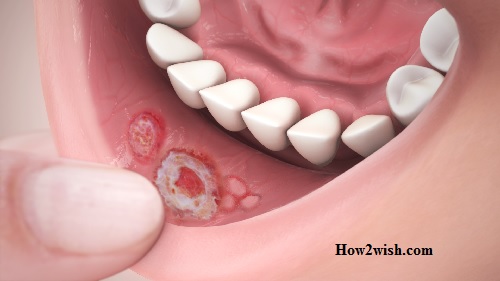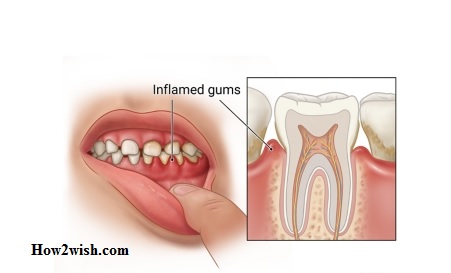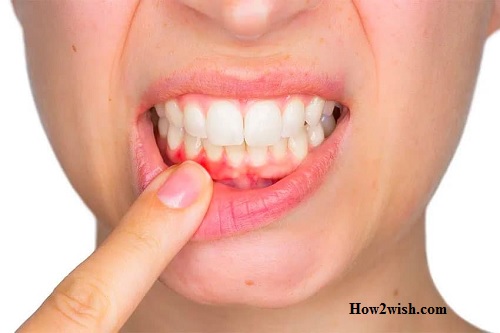Do you know about Inflammation of the Mouth? Failure to comply with oral hygiene leads to the development of various diseases. Food residues, plaque, high humidity, and high ambient temperatures are optimal conditions for the reproduction and spread of pathogenic microorganisms. One of the most common inflammatory processes is periostitis. The specialists of the dental clinic “Dentika” will tell you what it is, how it starts and what symptoms it accompanies, what to do if the flux has come out, and how it is treated at home and they will also show in the photo what the tooth looks like when it is affected.

What is a disease?
This is inflammation in the mouth, which originates from an infectious nature. It begins development as a result of penetration to the internal tissues and clogging of the gum pocket with particles of products that rot inside. Because of this, pus accumulates in the gum, it increases in size, and after it, the cheek also swells. In most cases, surgery is required. If you ignore this pathological condition, it can lead to serious complications.
Factors provoking the inflammatory process
What causes flux (the most common causes):
- advanced caries;
- basal cyst of the tooth;
- tartar;
- ingestion and decay of food debris in the gum pocket, which leads to inflammation and accumulation of purulent fluid;
- mechanical damage to molars;
- hypothermia of the body;
- violation of hygienic rules for the care of the oral cavity;
- chronic infections (runny nose and other ENT diseases);
- stomatitis (pathogenic microorganisms in this case multiply rapidly and spread to the internal tissues, due to which the inflammatory process develops).
Flux can also occur after tooth extraction. However, this phenomenon is infrequent. This is due to a medical error. To prevent this, you should choose proven dental clinics. Dentika dentistry employs experienced specialists who use sterile instruments and strictly follow the technology during the procedures, so infection is impossible.
Symptoms of the disease
The most obvious symptom is the appearance of a bump on the gum, due to which the cheek increases in size, and swells. Visually, it resembles a cyst, filled with purulent contents. Also, the flux may be accompanied by the following symptoms:
- pain in the affected area, which radiates to the back of the head, brain, and chin, spreads throughout the jaw;
- increased soreness with mechanical action on the sore spot;
- swelling and hyperemia of soft tissues;
- general intoxication of the body, which is accompanied by a deterioration in well-being;
- swelling of the side on which the development of the inflammatory process began;
- swelling of the nose, lips, and lower eyelids (in isolated cases);
- an increase in body temperature (in the acute course of the disease);
- enlargement of the cervical lymph nodes.
It is important not to miss the initial signs of infection. The sooner tooth flux treatment is started, the lower the risk of complications (first aid can be provided at home, but only specialists in dentistry can determine how quickly and completely to remove inflammation).
Diagnostic measures
The primary diagnosis consists in examining the patient, collecting complaints and anamnesis, palpation of the lymph nodes in the neck and masticatory muscles, and assessing the degree of mouth opening and soreness.
Additionally, the following methods of examination can be assigned:
- general blood analysis;
- radiography;
- computed tomography (with diffuse periostitis).
The dentist can refer, if necessary, to doctors of related specialties. For example, to an otolaryngologist, if there is a suspicion that the inflammatory process is provoked by ENT infections.
Stages of gum flux
Inflammation goes through several stages of development, each of which is characterized by a specific clinical picture.
Acute serous
Has a fast flow. It usually lasts no more than 3 days. The periosteal tissues are saturated with fluid due to the perspiration of plasma through the vascular walls. The gum in the affected area swells and turns red. Because of this, the cheek increases in size. This phase is characterized by severe pain, possibly an increase in body temperature. Soreness is aggravated by mechanical pressure, for example, when eating.
When examining a doctor, it is necessary to accurately determine the inflammatory focus. To do this, he performs tapping on the tooth. If the dental unit is defined correctly, the pain becomes sharp and strong.
Acute purulent
The serous stage passes into this form if the inflammation has not been eliminated on time. The mucous membranes in the oral cavity swell and hyperemia are observed on them. If diagnosed with hyperthermia (up to 38.5 °), it is necessary to take antipyretic drugs.
The pain is intense, throbbing, and almost continuous. An abscess develops in the affected area, as well as in areas adjacent to it. Because of this, it is difficult for the patient to open his mouth. The tooth becomes mobile. Sometimes you can observe a yellow formation on the gum, filled with pus.
Acute diffuse
Follows after the purulent phase. At this stage, swelling covers almost the entire surface of the oral cavity. In advanced cases, it can spread to the nose, lips, lower eyelids, and the outer side of the cheek. Painful sensations are similar to the previous stage. The temperature rises to 39°.
Chronic
Many people wonder if flux can pass on its own. No, he needs treatment. Otherwise, it will go into this form. That is, the disease will worsen periodically under the influence of provoking factors (for example, when the immune system is weakened, hypothermia, stress, and so on). The tissues will begin constantly inflame, redden, swell, and hurt. Moreover, the abscess occurs for a couple of days, then disappears on its own. Before this, purulent contents may be released. But this does not mean that therapy is not required. Without it, such exacerbations can be observed very often.

Flow features
Adult patients have to think more often than to treat flux on the gums at home, and how to relieve swelling of the cheeks, since the disease manifests itself in them more often than in children. This is due to constant stressful situations, the presence of bad habits, neglect of hygiene requirements, and preventive examinations at the dentist. Most often, the inflammatory process is accompanied by a pronounced clinical picture. Folk remedies can only alleviate the situation, but not cure the disease. Therefore, in any case, you will have to visit the dental office until the periostitis has turned into various serious complications.
Leakage in pediatric patients
Flux in a child can also be diagnosed, what to do with it, the dentist will determine at the appointment. Usually, the symptoms are mild. This is since immunity in children is not as active and cannot normally resist the reproduction and spread of infectious agents. However, there will still be signs similar to adults, just not so bright. In addition, the disease also goes through four stages of development. In order not to start the situation, you need to immediately sign up for a dental clinic at the first symptoms to avoid dangerous consequences. The sooner treatment is started, the easier it will be to heal.
Note! What medicines to drink for a child with a tooth flux, the doctor decides. You can not give any pills on your own, especially antibiotics. They destroy not only pathogenic microflora but also useful ones. Therefore, self-treatment with them can be harmful.
The Complete Guide to Wisdom Teeth Removal, Risks and Side Effects
Complications
Periostitis is a serious disease of the oral cavity and needs qualified treatment. Seeing a doctor is a must. If the problem is left unattended, it will lead to serious complications, including sepsis and inflammation of the cranial sinuses, which can even be fatal.
Abscess
Most often it develops when a purulent sac is located near the dental unit for a long time. It begins to actively grow, which leads to an abscess.
Phlegmon
It appears after the formation on the gum opens and its contents begin to spread to nearby tissues. This is usually observed when an adult patient ignores the appointments and recommendations of a specialist, which provokes more serious consequences (does not rinse his mouth and teeth with flux at home so that it passes faster, does not take the prescribed drug, and so on).
Jaw osteomyelitis
Long untreated periostitis leads to it. As a result, the inflammatory process spreads from the periosteum to the jaw bone.
Therapy regimen
It is impossible to delay contacting the dental clinic. If you suspect this disease, you should immediately make an appointment and come to the reception. The dentist uses one of two methods of treatment:
- Opening of the purulent sac. A small incision is made on it, through which pus is removed. Manipulation is performed under anesthesia, so pain and discomfort are absent. After that, a drainage is placed, which is a rubber strip. It is necessary for the outflow of the contents of the formation, and also so that the wound does not heal prematurely.
- Cleaning an abscess through a root canal is another way to treat flux. It is resorted to if the inflammation is provoked by caries or a crack.
Often, in the advanced stages of the disease, the removal of the affected tooth is required. As a rule, this is necessary if the molar is almost destroyed or there is a large infectious focus between it and the gum. Also, resection is resorted to when there is severe damage on the crown that cannot be restored. In modern dentistry, potent anesthetics and innovative equipment and instruments are used. Therefore, everything goes quickly and painlessly for the patient.
How to remove a diseased dental unit with flux:
- An incision is made on the periosteum or mucous membrane of the mouth.
- The tooth is usually removed gradually, in parts. For this, special tools are used – a dental saw or a laser.
- After the operation, the sharp edges of the cut are smoothed. Its cavity is washed with peroxide and other antiseptics.
- At the very end, stitches are applied. They are self-absorbable and do not need to be removed.
Antibiotics and anti-inflammatory drugs are used as part of complex maintenance therapy. Many are wondering how to remove and cure the flux at home quickly and effectively with such medicines. We want to warn you right away that it is impossible to take them without a doctor’s prescription. In addition, they can only alleviate the condition in pathology, but cannot eliminate pus and completely stop the inflammatory process. This requires surgical intervention.
After it, antibacterial drugs are prescribed to destroy the remnants of pathogenic microorganisms. It is also necessary to treat the wound with antiseptic solutions. Additionally, vitamin-mineral complexes can be prescribed to strengthen and stimulate the response of the immune system.

There are also recommended physiotherapy procedures:
- iodine-potassium electrophoresis;
- UHF therapy.
This is what helps to cope with inflammation, eliminates soreness and discomfort, destroys the infection, and accelerates tissue regeneration with flux on the palate and gums. Postoperative therapy should never be interrupted or completed prematurely. It is carried out until the wound is completely healed, and the symptoms pass.
Treatment at home
First, check out the do’s and don’ts:
- use any medicines and folk remedies without the appointment of a specialist;
- Take aspirin and other drugs containing this substance until the wound heals;
- do not go to dentistry if, after the breakthrough of the abscess, intense pain lasts for 8 hours;
- Also, many do not know whether it is possible to warm the diseased area – in no case should this be done when deciding how and how to quickly cure the flux at home and give up warming compresses (they promote the growth of bacteria).
You can rinse yourself at home:
- A solution of salt and soda. To prepare it, dilute 1 tsp in a glass of water at room temperature. Each ingredient. This procedure helps to draw out pus, relieve conditions, and reduce pain. Carry it out as often as possible, from 5 times a day.
- Herbal decoctions. Use lemon balm, calendula, sage, and oak bark. The crushed parts of the plant are infused for several hours in boiling water; after cooling, the mouth is rinsed with liquid after each meal.
- Miramistin and chlorhexidine. These antiseptics prevent the spread of infection, contribute to opening a purulent abscess, and accelerate wound healing.
Important! Folk remedies can only be used as first aid. They improve the patient’s well-being but cannot completely cure the disease.
Preventive actions
Prevention of infection is as follows:
- timely professional cleaning of plaque and calculus;
- the use of a special rinse and thread after each meal;
- limited consumption of sweets;
- inclusion in the diet of hard vegetables and fruits (apples, carrots, hard varieties of pears, and so on) to strengthen;
- regular cleaning of the oral cavity with a brush and paste (morning and evening);
- timely removal of wisdom teeth;
- regular preventive examinations in the dental office (at least 1 time in 6 months);
- treatment of concomitant diseases under the supervision of a physician;
- strengthening the immune system (moderate physical activity, rational and balanced nutrition, hardening, taking vitamin and mineral complexes, etc.).
Of course, the above cannot completely exclude the possibility of developing an inflammatory process. Still, it significantly reduces the risks and prevents the manifestation of frequent relapses in the chronic form.
Summing up on Inflammation:
We told how dangerous the flux is, how and how to remove it, and whether it is possible to get rid of it quickly at home with folk remedies. As it became clear, an appeal to a specialist is required. Non-traditional home treatments can only be used as first aid when visiting the dental clinic immediately is impossible. You can’t delay therapy. Otherwise, severe complications can be provoked in adult patients and children.